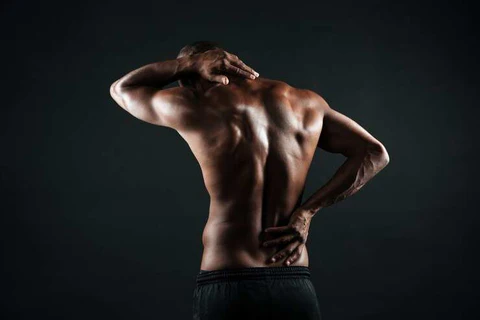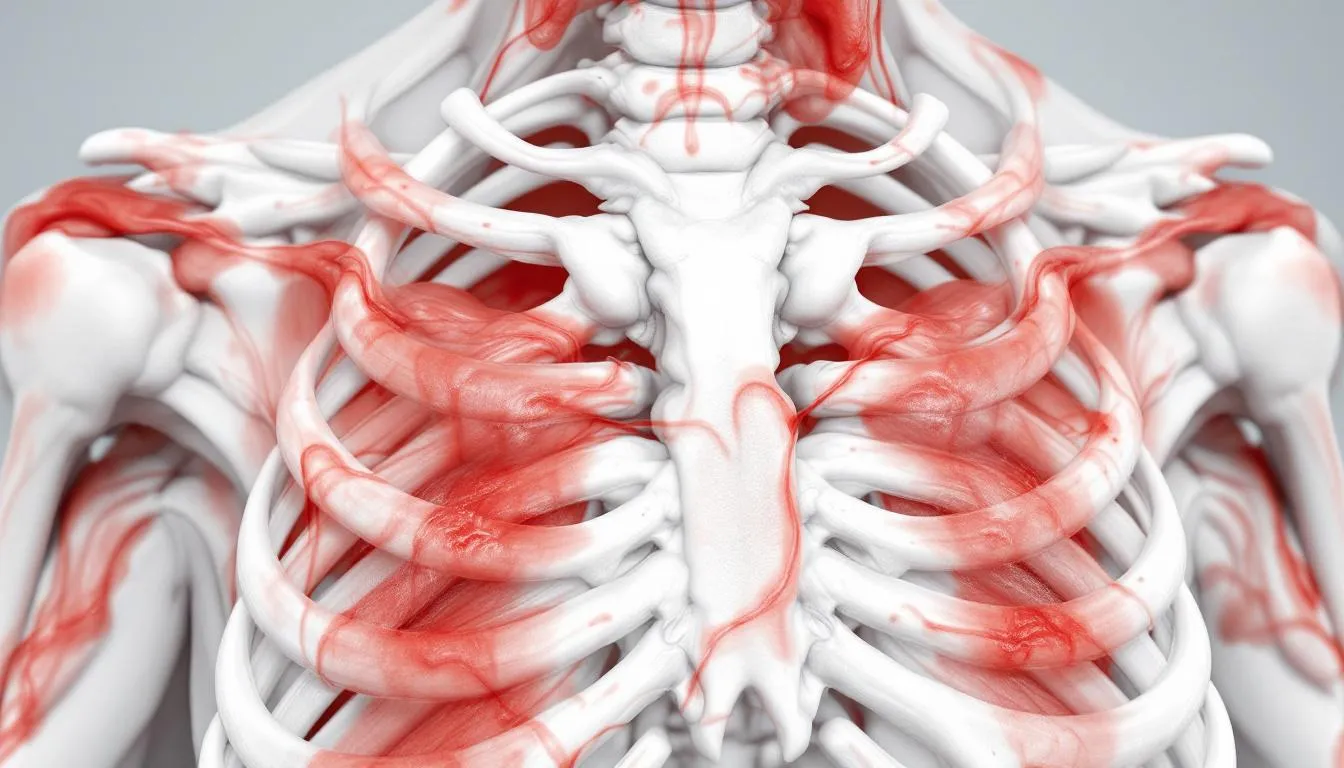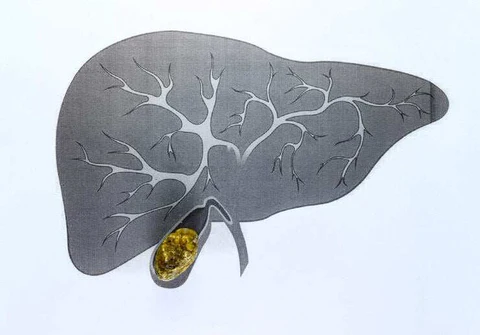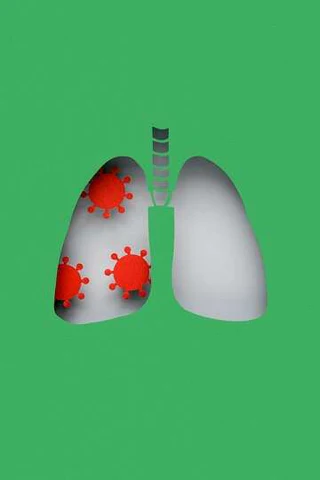
 Instagram
Instagram
What Does Pain Under Right Breast Bra Line Mean?


Related products
Pain under the right breast bra line is a common concern, often felt as a sharp or dull ache in the breast area where the bra strap rests. This breast pain may stem from breast tissue, muscles, joints in the chest wall, or even be a sign of breast cancer. Locating the pain specifically on the right side helps narrow down potential causes. In this article, we explore the most common reasons for right-sided breast pain, backed by medical insights, to help you understand and manage your symptoms effectively.
Introduction to Breast Pain
Breast pain, or mastalgia, is a common symptom in women and, occasionally, men. It may affect one or both breasts, ranging from mild tenderness to sharp, localised discomfort. Often linked to hormonal changes—especially during the menstrual cycle, causing cyclic breast pain—it can also result from changes in breast tissue or underlying conditions. Recognising the type and cause of breast pain is key to knowing whether it’s a natural response or something requiring medical attention.
Types of Breast Pain
Breast pain, or mastalgia, isn't a uniform condition—it comes in different forms with varying causes. The two main types are cyclical and non-cyclical, depending on whether the pain is linked to the menstrual period and hormone levels.
Cyclical breast pain is closely tied to hormonal fluctuations during the menstrual cycle. It usually affects both breasts—often with a dull ache, heaviness, or tenderness—and tends to worsen before a period and ease once it begins. This type of breast pain is most common in women of reproductive age.
Noncyclical breast pain occurs independently of the menstrual cycle and often affects one breast or a specific area. It may feel sharp, burning, or persistent, and can stem from causes such as injury, infection, or benign breast conditions. This type of pain is more common in postmenopausal women.
Extramammary breast pain originates from the chest wall or nearby muscles and tissues, not the breast itself. Often mistaken for true breast pain, it can result from muscle strain, costochondritis, or referred pain from other organs.
Identifying the type of breast pain—cyclical, noncyclical, or extramammary—can help pinpoint the cause and guide effective treatment. If you experience persistent, new, or unexplained breast pain, especially with other symptoms, consult a healthcare professional for proper assessment.
Muscle strain

Muscle strain—or a pulled muscle—occurs when muscle fibres are overstretched or torn, often due to intense activity, sudden movement, or repetitive use. Breast pain may stem from chest muscle strain or intercostal neuralgia, a nerve-related condition with similar symptoms.
Right breast pain under the bra line caused by muscle strain is typically sharp and sudden, linked to damage in the chest muscles during strenuous activity. The discomfort can persist depending on the severity of the strain and individual health factors.
Associated symptoms of muscle strain under the right breast may include localised swelling, tenderness to touch, visible bruising, and a limited range of motion. These symptoms can make everyday tasks uncomfortable or difficult due to persistent breast pain and tissue trauma.
Diagnosing a muscle strain typically involves a physical examination and symptom assessment. A healthcare provider will check for tenderness, swelling, or redness and may ask the patient to lean forward to determine whether the pain is muscular or linked to another cause.
Managing muscle strain under the breast band usually involves rest and appropriate care. It's important to consult a healthcare professional to assess the severity and create a tailored treatment plan suited to your individual needs.
Severe muscle strains involving complete tears may require medical intervention, including surgery, to restore proper function. Thankfully, such cases are rare compared to more common, mild to moderate strains.
In certain cases, applying a topical emollient such as Allergenics Emollient Cream can help soothe irritated or inflamed skin, especially when discomfort is caused by friction or compression from clothing.
Explore our full pain relief collection to discover natural and medicated solutions designed to support relief from bra line discomfort and aid holistic recovery.
Injury
Injury refers to physical damage caused by external force and can lead to breast pain under the right bra line. Trauma to the chest—whether from accidents, falls, sports, or repetitive strain—may result in localised discomfort. In some cases, rib fractures may also be responsible, producing similar symptoms in the affected area.
Trauma or injury can cause localised pain under the right breast, often presenting with tenderness, swelling, and bruising. This discomfort may worsen with movement or pressure. Usual symptoms include redness, shortness of breath, and limited arm mobility.
To diagnose injuries causing breast pain under the right bra line, medical professionals perform a physical exam and may use imaging tests such as X-rays or MRI scans. They typically assess for bruising, swelling, tenderness, and check mobility in the surrounding area.
Treatment for injuries under the right breast bra line typically includes rest, ice therapy (20 minutes every 2 hours), and pain relief with paracetamol or ibuprofen. Compression and elevation may reduce swelling, while muscle relaxants can ease tension. Physiotherapy may help rebuild strength. Though surgery is rarely needed, early diagnosis and proper care greatly improve recovery and help prevent long-term complications.
For minor skin irritation caused by injury or tight clothing, soothing products like Aloe Vera Face & Body Cream for Sensitive Skin can help calm inflammation, hydrate the area, and support the skin’s natural healing barrier.
Costochondritis

Costochondritis refers to inflammation of the cartilage connecting the ribs to the breastbone, often causing sharp or aching pain beneath the right breast bra line. This chest pain may be triggered by repetitive motion, trauma, or, in some cases, viral infection. A similar condition, Tietze syndrome, also causes rib cartilage pain but includes visible swelling and should be considered in the diagnosis.
Costochondritis typically presents with tenderness and swelling where the ribs connect to the sternum. Pain often worsens with deep breathing, coughing, or movement, such as lifting or bending. Some individuals find relief when gentle pressure is applied. Discomfort under the right breast bra line may radiate to the arms or back, especially if nearby nerves are affected.
Diagnosing costochondritis usually involves a physical examination, where a doctor checks for tenderness along the rib cage near the sternum. Imaging tests like X-rays may be used to rule out other conditions such as rib fractures or arthritis. It’s also important to differentiate costochondritis from breast-related issues, as benign breast conditions can cause similar pain but require different treatment.
Treatment for costochondritis typically involves pain relief using nonsteroidal anti-inflammatory drugs (NSAIDs) and applying ice packs to reduce inflammation. For ongoing discomfort, a doctor may prescribe topical corticosteroids such as Betamethasone to ease swelling, though these should only be used under professional supervision due to their strength.
Pleural Disorders
Pleural disorders affect the pleura—the thin membrane surrounding the lungs and lining the chest wall. A common example is pleurisy, where inflammation triggers sharp pleuritic pain under the right breast bra line. This pain often worsens with deep breathing or coughing and is typically felt beneath where a bra strap rests on the right side.
Pleural disorders can result from infections like pneumonia, lung conditions such as COPD, autoimmune diseases including lupus, chest trauma, or certain medications. If you experience ongoing pain under the right breast bra line, it’s essential to seek prompt medical evaluation to identify the cause and begin appropriate treatment.
Symptoms of pleural disorders may include shortness of breath, chest tightness, fever, dry cough, and unexplained weight loss. These signs, alongside pain under the right breast bra line, help guide an accurate diagnosis.
Diagnosis involves a physical exam—often listening for abnormal breath sounds—alongside chest X-rays, CT scans, blood tests, and sometimes thoracentesis (removal of fluid from around the lungs with a needle).
Treatment for pleural disorders depends on the underlying cause. If an infection is present, antibiotics are typically prescribed. Nonsteroidal anti-inflammatory drugs (NSAIDs) help reduce inflammation and relieve pain. In more severe cases, hospitalisation may be required to drain excess fluid, and if fluid collections persist, surgical intervention may be necessary.
Gallstones

Gallstones are solid particles that develop in the gallbladder and are a common cause of pain under the right breast line. This discomfort, known as biliary colic, often presents as a sudden, sharp pain in the upper right abdomen or just beneath the right breast. Since the gallbladder sits beneath the liver on the right side, any blockage or irritation can lead to pain that radiates to this area. Gallstones should be considered as a possible cause when evaluating unexplained discomfort in the breast region.
The underlying cause of this pain lies in how the body processes bile, a digestive fluid stored in the gallbladder that helps break down fats. Over time, excess cholesterol or bilirubin can harden into gallstones. When these stones move or block bile flow, they irritate the gallbladder lining, leading to inflammation and sharp pain under the right breast, often near the bra line.
Associated symptoms of gallstone-related pain may include nausea, occasional vomiting—particularly after fatty meals—yellowing of the skin (jaundice), dark urine, and pale stools. These signs occur when bilirubin builds up in the body due to blocked bile flow.
Gallstones are typically diagnosed through a combination of medical history, symptom assessment, and imaging tests. Ultrasound scans are the most commonly used method due to their non-invasive nature and ability to provide a clear view of the gallbladder, helping confirm the presence of stones without the need for invasive procedures.
Gallstone treatment often begins with lifestyle changes, such as adopting a low-fat, nutrient-rich diet to reduce symptoms and prevent new stones from forming. In more serious cases, surgical removal of the gallbladder (cholecystectomy) may be required. This procedure eliminates the source of gallstone formation and offers a permanent solution with no risk of recurrence.
Women concerned with hormone-related breast and gallbladder health may consider supplements like Life Extension Breast Health Formula. This blend of herbal and nutrient-based ingredients is designed to support healthy oestrogen metabolism. However, it should be used as a complement to regular medical screening, not a substitute for professional care.
Pneumonia

Pneumonia is a lung infection that causes inflammation in the air sacs, often filling them with fluid or pus. This leads to symptoms such as cough with phlegm, fever, chest pain, and shortness of breath.
Pain under the right breast bra line may indicate an underlying condition, such as pneumonia, especially lower lobe pneumonia, where infection in the lower part of the lung causes discomfort in this area. Another potential cause is pleural effusion—a fluid buildup around the lungs, which can lead to similar pain and may require medical treatment.
The crucial indicators associated with pneumonia include persistent coughing, which produces thick sputum (often greenish), high temperature or very high temperature noticeable through shivering or sweating episodes, shortness of breath even during rest periods, abrupt sharp chest pains exacerbated by inhaling deeply or abruptly moving torso parts, including when bending over—all these come along with feeling fatigued without a reasonable cause.
To diagnose pneumonia accurately, doctors must carry out several specific medical procedures: physical exams, where doctors listen carefully for potential abnormalities like wheezing; laboratory tests involving mucus examinations; imaging techniques, especially chest X-rays, which demonstrate areas affected within the lungs; and blood tests, which help confirm whether the body fights off bacteria, hence evidencing an ongoing infection.
Management for pneumonia varies depending on the age bracket involved and severity levels noted for each case. Treatment methods typically encompass medicinal prescriptions, including antibiotics prescribed according to the severity observed from confirmed infection types, and spaces left vacant depending on the circumstance.
In severe instances, hospitalisation becomes necessary, permitting continuous monitoring while supplying supplemental oxygen plus executing further complicated treatment protocols if called for, thereby expediting smooth recovery strides while minimising the likelihood of fatalities amongst the patients’ populace across healthcare facilities’ far-reaching spectrum.
Hiatal Hernia
A condition called hiatal hernia occurs when part of the stomach bulges through an opening (hiatus) in the diaphragm, moving up into the chest. This displacement often leads to pain beneath the bra line, specifically under the right breast, due to the pressure and discomfort caused by this movement.
It is important to note that gastroesophageal reflux disease (GERD) can also cause similar pain under the right breast due to acid reflux and should be considered in the differential diagnosis.
Among key information concerning Hiatal Hernias are their commonality amongst those over 50 years of age and how overweight individuals present a higher risk factor, given the extra forces exerted onto organs within one’s torso.
Associated symptoms with a hiatal hernia extend beyond mere localised pain. Heartburn after meals or when lying down, frequent belching, difficulty swallowing, and feelings of fullness typically prompt further investigation by healthcare professionals toward diagnosing this complaint.
Diagnoses generally involve several procedures, such as endoscopy, which allows for visual examination inside your body using a tube equipped with light and camera; barium X-ray, which requires ingesting barium-filled liquid before X-rays detect anomalies in the digestive tract lining; or manometric studies, which measure rhythmic muscle contractions within the oesophagus during swallowing.
Depending on the severity, treating these conditions involves either medication or surgery. Medications aim to reduce stomach acid production, alleviating heartburn. At the same time, surgical interventions help reduce the size of the hiatus, preventing the stomach from protruding back up into the upper chest cavity.
Irritable Bowel Syndrome
Irritable Bowel Syndrome, commonly known as IBS, is a chronic disorder affecting the large intestine. It often leads to uncomfortable symptoms such as bloating, gas, cramping, diarrhoea, and constipation. IBS can also make individuals feel unwell overall, in addition to causing localised pain.
One might wonder how this intestinal disorder relates to pain under the right breast bra line. In simple terms, this can be explained by 'referred pain,' which is when discomfort is felt in an area far from its source due to shared nerve pathways in the body.
IBS causes persistent abdominal distress, which sometimes gets registered by our nervous system as chest discomfort, specifically beneath or around the right side of the ribcage where your bra strap rests, thereby leading one experiencing it into believing they have an issue with their upper torso while having an underlying gastrointestinal problem.
Besides those already mentioned for IBS, more specific signs like feeling excessively full (distention), incomplete evacuation after defecation, or mucus discharge are other indications requiring attention.
To ensure these symptoms are related to this syndrome, experts usually perform several medical evaluations, starting with a history-taking about bowel habits, followed by a physical examination and then diagnostic investigations, including blood tests and imaging studies, before performing a colonoscopy/biopsy only if required. Some cases necessitate the exclusion of similar conditions like inflammatory bowel disease and celiac ailment via additional testing for proper diagnosis formation, too.
Managing Irritable Bowel Syndrome primarily involves lifestyle modifications focusing on diet adjustments, e.g., reducing caffeine intake, helping most patients experience fewer aggravated episodes, along with stress management techniques aiding symptom relief, largely plus medications prescribed targeting particular issues according to possible needs, i.e., antispasmodic agents aim to ease severe cramps. In contrast, anti-diarrheal drugs control erratic bowels, etc., duly administered after professional consultations, eventually helping to restore routine regularity yet improving quality of life significantly over time, despite no definitive cure existing for effectively eradicating Illness now based on current scientific research findings available.
Breast Tissue and Pain
The breast is made up of glandular, fatty, and connective tissue, all of which can respond to hormonal changes throughout the menstrual cycle. Many women experience breast pain or tenderness (also known as mastodynia) as a result of these fluctuations, particularly if they have fibrocystic breast tissue, a benign condition where the breasts feel lumpy or rope-like due to cysts and fibrous tissue. This type of breast pain is often cyclical, intensifying before a menstrual period and easing afterwards. However, breast pain can also be triggered by non-hormonal factors such as breast infection (mastitis), injury, or even after breast surgery. Recognising the role of breast tissue and hormonal changes in causing breast pain can help individuals better understand their symptoms and seek appropriate care when needed.
Understanding Breast Cancer Symptoms
While breast pain can be concerning, it is important to note that most cases are not related to breast cancer. The most frequent symptoms of breast cancer include the appearance of a new lump, noticeable skin changes (such as dimpling or an orange peel texture), nipple discharge, or changes in the shape or size of the breast. Although breast pain is not typically a sign of breast cancer, certain types, such as inflammatory breast cancer, may cause pain along with other symptoms like redness, swelling, and skin changes. Additionally, Paget's disease of the breast is a rare form of breast cancer that can cause pain, nipple changes, and skin abnormalities. Most breast pain is associated with benign breast disease rather than malignant conditions. However, being aware of all potential symptoms of breast cancer—including unexplained pain, new lumps, or persistent skin changes—can help with early detection and prompt medical evaluation if needed.
Risk Factors and Prevention
Several factors can increase the likelihood of experiencing breast pain, including hormonal changes, a family history of breast conditions, and medical issues like fibrocystic tissue. Obesity is also a contributing factor, as excess weight can lead to increased estrogen levels and added pressure on breast tissue, both of which may raise the risk of experiencing breast pain. Certain medications, such as hormone replacement therapy and birth control pills, may also contribute to breast pain. To help prevent or reduce breast pain, it is important to manage these risk factors where possible. Wearing a properly fitted bra can provide support and minimise discomfort, especially for those with larger breasts or during physical activity. Regular breast examination and breast screening are essential for early detection of breast cancer and for monitoring any changes in the tissue. Adopting a healthy lifestyle and being mindful of medications that may cause breast pain are key steps in comprehensive management and prevention.
Ease Breast Pain
There are several effective ways to lessen breast pain and improve comfort. Wearing a supportive bra, such as a well-fitting bra or sports bra, can help reduce breast movement and relieve breast pain, especially during exercise. Applying a cold compress to the breasts can help reduce pain and inflammation by numbing the area and decreasing swelling. Relaxation therapy techniques, including deep breathing and meditation, may help manage stress-related pain. Dietary changes, such as following a low-fat diet and reducing caffeine and nicotine intake, have been shown to help some women with breast pain. Over-the-counter pain relievers like ibuprofen can be useful for managing non-cyclical breast pain. In certain cases, hormone therapy or supplements like evening primrose oil may be recommended to help alleviate breast pain. It is important to consult a healthcare provider to determine the most appropriate treatment and to rule out any underlying conditions that may cause breast pain. Making these lifestyle changes and seeking professional advice can help many women experience relief and maintain breast health.
When To See a Doctor for Breast Pain
Experiencing pain under the right breast bra line, while it might be linked to conditions like irritable bowel syndrome or simple muscle strain, warrants medical attention if it is persistent. It becomes crucial when accompanied by symptoms such as severe and unexplained chest discomfort, difficulty breathing, sudden weight loss, or additional signs of an acute health condition.
-
A few specific scenarios warranting prompt healthcare professional consultation include:
-
If the pain continues for more than a few days.
-
If pain persists for more than two weeks, it is important to consult a healthcare professional.
-
Symptoms become progressively worse rather than improving over time.
-
There’s the onset of new associated symptoms - nausea/vomiting, jaundice (yellowish skin/eyes), high fever/sweat, etc.
These situations point towards potential serious underlying disorders, including gallstones, rib fractures, and even possibly lung diseases, i.e., pneumonia, requiring immediate assessment, hence appropriate treatment accordingly.
Moreover, recurrently experiencing the mentioned discomfort despite no discernible cause should not be dismissed lightly, implying the need for a thorough workup, particularly in women, owing to risk factors contributing to heart issues due to age or postmenopausal status.
Summary of Causes of Breast Pain
Pain under the right breast stems from various causes, including muscle strain, musculoskeletal pain, and gallbladder disease. Musculoskeletal pain refers to discomfort originating from the muscles or bones in the chest wall, which can be caused by overexertion, injury, or poor posture. Muscle strains often result from overexertion or unexpected movements and are accompanied by localised swelling and limited mobility. More serious conditions, like gallbladder disorders, present with added symptoms such as nausea and changes in stool colour. Determining the exact cause of breast pain is essential for effective treatment and management. It is important to seek medical care if symptoms persist.
Frequently asked questions
What causes pain on the right side of the breast?
Pain on the right side under the breast is commonly caused by muscle strain from overexertion or sudden movements. However, it might indicate more serious conditions such as gallbladder disease. Other potential causes include costochondritis, pleural disorders, and rib injuries. Pain can also be due to cyclic breast pain related to hormone changes or noncyclic breast pain from other causes.
What Causes Pain Under The Bra Line?
Pain under the bra line is most commonly caused by muscle strain due to physical exertion or improper movement. It is a symptom of underlying conditions such as gallbladder disease, costochondritis (inflammation of the cartilage in the chest), and gastritis (inflammation of the stomach lining). Changes in hormone levels, use of the contraceptive pill, or a breast abscess can also cause pain in this area.
Why does the right side of my ribs hurt under my breast?
Right-sided rib pain under the breast is usually due to muscle strain, gallbladder disease, liver problems, or liver disease. Pain can sometimes involve the whole breast or just a part, and painful breasts may be a symptom of various conditions. Hence, persistent discomfort in this area necessitates a medical evaluation.
When should I be worried about right-side pain under the ribs?
If right-sided pain under the ribs is severe, persistent, or accompanied by symptoms like jaundice, chest tightness, or shortness of breath, seek immediate medical attention. If you feel sore or unwell, or if pain is accompanied by other symptoms, you should seek medical advice, possibly at a breast clinic. Such signs indicate serious health issues.
How important is early detection of breast cancer and can complementary therapies help?
Finding breast cancer early is crucial, as early detection can significantly improve outcomes. While complementary therapies such as relaxation techniques, acupuncture, or aromatherapy may help manage symptoms like cyclical breast pain, they do not replace medical evaluation or treatment. Always consult a healthcare provider if you have concerns about breast pain or other symptoms.



















 Rated Excellent by 26,523+ Reviews
Rated Excellent by 26,523+ Reviews